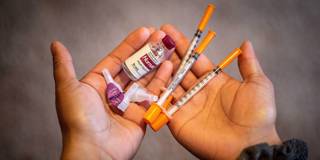The number of people with diabetes worldwide is expected to rise dramatically in the next 20 years, particularly in lower-income countries, but insulin remains out of reach for millions. As more effective forms of insulin therapy become available, governments and pharmaceutical companies must do their part to increase access.
AMSTERDAM – After insulin was discovered in 1921, the Canadian scientists behind the breakthrough sold the patent for their formula for just C$1. As medical researcher Frederick Banting said at the time, they wanted to make it as widely available as possible because “it belongs to the world.” In the century since then, a host of improved forms of insulin have been developed, offering greater efficiency and convenience to people with diabetes. Yet millions still struggle to access any version of this lifesaving drug.

AMSTERDAM – After insulin was discovered in 1921, the Canadian scientists behind the breakthrough sold the patent for their formula for just C$1. As medical researcher Frederick Banting said at the time, they wanted to make it as widely available as possible because “it belongs to the world.” In the century since then, a host of improved forms of insulin have been developed, offering greater efficiency and convenience to people with diabetes. Yet millions still struggle to access any version of this lifesaving drug.